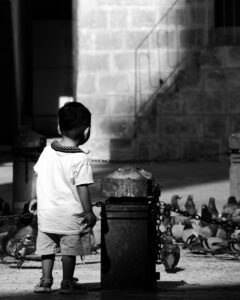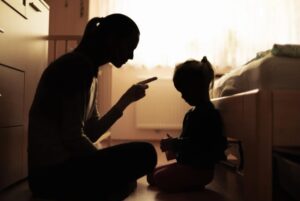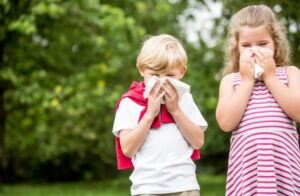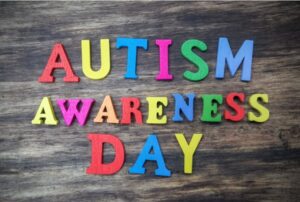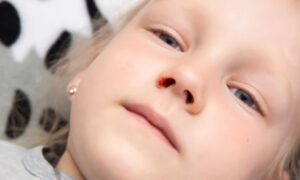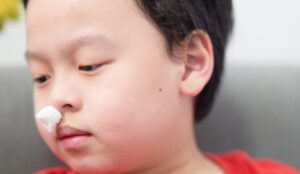Post-Traumatic Stress Disorder (PTSD) is a psychological disorder triggered by experiencing or witnessing traumatic events. It is commonly seen in adults, but children can also be affected. Traumatic events include natural disasters, violent incidents, accidents, or the loss of a loved one. Children are more emotionally and psychologically vulnerable, and after experiencing such events, they may develop PTSD. Understanding the symptoms, causes, and treatment options for PTSD can help parents and educators better support children through these challenges.
What is PTSD in Children?
PTSD in children refers to a psychological condition where children experience emotional distress, behavioral changes, and psychological responses for a month or more after going through or witnessing a traumatic event. The symptoms of PTSD may not appear immediately and can emerge weeks or even months after the trauma, sometimes even years later.
Common Symptoms of PTSD in Children
The symptoms of PTSD in children may differ slightly from those in adults. Children may express their distress through behaviors or physical reactions. Here are some common symptoms of PTSD:
Re-experiencing the Trauma:
- Children may relive the trauma through nightmares or flashbacks during the day.
- They may have uncontrollable fragments of the traumatic memory.
- Sometimes, they may suddenly feel fear and anxiety, as if they are reliving the trauma.
Avoidance Behavior:
- Children may try to avoid anything related to the trauma, including places, people, or topics associated with the event.
- They may avoid specific locations or even refuse to participate in certain activities.
Emotional Changes:
- They may experience emotional swings, frequently feeling scared, anxious, angry, or sad.
- Some children may become emotionally numb, lose interest in daily activities, and find it hard to feel joy.
Hyperarousal:
- Children may become highly alert and easily irritable, often in a state of tension and easily startled.
- Sleep disturbances and difficulty concentrating are also common.
Negative Self-Image:
- Some children may develop negative self-perceptions, feeling worthless or unlovable.
- They may feel helpless and lose hope for the future.
Causes of PTSD in Children
The direct cause of PTSD in children is exposure to traumatic events, which may include:
- Natural Disasters: Such as earthquakes, floods, or fires.
- Family Trauma: Such as parental divorce, the death of a loved one, or domestic violence.
- Violent Incidents: Witnessing or experiencing acts of violence, abuse, or bullying.
- Major Accidents: Such as car accidents or severe injuries.
In addition to the trauma itself, the following factors can increase the risk of PTSD in children:
- Lack of Emotional Support: If a child does not receive emotional support from family or friends after a traumatic event, they are more likely to develop PTSD.
- Individual Differences: A child’s personality, emotional regulation ability, and coping mechanisms can also influence whether they develop PTSD.
How is PTSD in Children Diagnosed?
PTSD is typically diagnosed by a mental health professional, such as a psychologist or psychiatrist. The diagnosis process includes the following steps:
- Review of the Traumatic Event: The doctor will ask the child about the traumatic event they experienced or witnessed and gather details about the situation.
- Symptom Evaluation: The doctor will assess the child’s behavioral changes, emotional reactions, sleep problems, and other symptoms to determine if they meet the criteria for PTSD.
- Feedback from Parents and Teachers: The doctor will also gather feedback from parents and teachers to understand how the child is functioning at home and school.
Treatment for PTSD in Children
Treatment for PTSD involves a combination of psychological interventions and emotional support. Here are some common treatment methods:
Psychotherapy:
- Cognitive Behavioral Therapy (CBT): Helps children change negative thought patterns and coping strategies, encouraging them to reframe the trauma and learn how to manage painful emotions.
- Exposure Therapy: In a safe environment, the child is gradually exposed to trauma-related situations, helping reduce fear and avoidance behaviors.
- Play Therapy: Suitable for younger children, this allows them to express their emotions through play, helping to alleviate psychological stress.
Medication:
In some cases, doctors may prescribe medication to help control symptoms such as anxiety, depression, or insomnia. However, medication is usually an adjunct to psychological therapy, with the focus remaining on psychotherapy.
Family Support:
Family plays a crucial role in a child’s recovery. Parents should be patient, offer emotional support, and avoid blaming or pressuring the child to confront the trauma. Encouraging the child to express their feelings and working together to find appropriate coping strategies is important.
School and Community Support:
Schools can provide additional support for children with PTSD, such as individualized learning plans, social skills training, and counseling. Community mental health resources can also help children and their families.
How to Prevent and Respond to Trauma Reactions?
While traumatic events cannot always be avoided, parents and educators can take the following steps to reduce the likelihood of PTSD:
- Provide a Safe Environment: Help children feel secure at home and school to reduce anxiety caused by traumatic events.
- Seek Help Early: After a traumatic event, seek out mental health professionals to ensure the child receives a timely evaluation and support.
- Encourage Emotional Expression: Communicate with the child and encourage them to express their fears and worries, helping them avoid suppressing emotions.
- Enhance Emotional Support: Parents and teachers can help children regain confidence in life and restore emotional balance through companionship and care.
By offering timely support and seeking professional help, children can recover from trauma and regain emotional well-being.
Reference:
National Institute of Mental Health (NIMH) - Provides comprehensive information about PTSD, including symptoms, causes, and treatment options.
NIMH: PTSD
American Academy of Pediatrics (AAP) - Offers guidelines on recognizing and addressing PTSD in children and adolescents.
AAP: Trauma and Stress
Substance Abuse and Mental Health Services Administration (SAMHSA) - Discusses trauma and its impact on children, including resources for support.
SAMHSA: Trauma and Children
American Psychological Association (APA) - Provides resources on how trauma affects children and adolescents, as well as treatment strategies.
APA: Children and Trauma
Child Mind Institute - Offers insights into PTSD in children, including symptoms, causes, and effective treatments.
Child Mind Institute: PTSD




